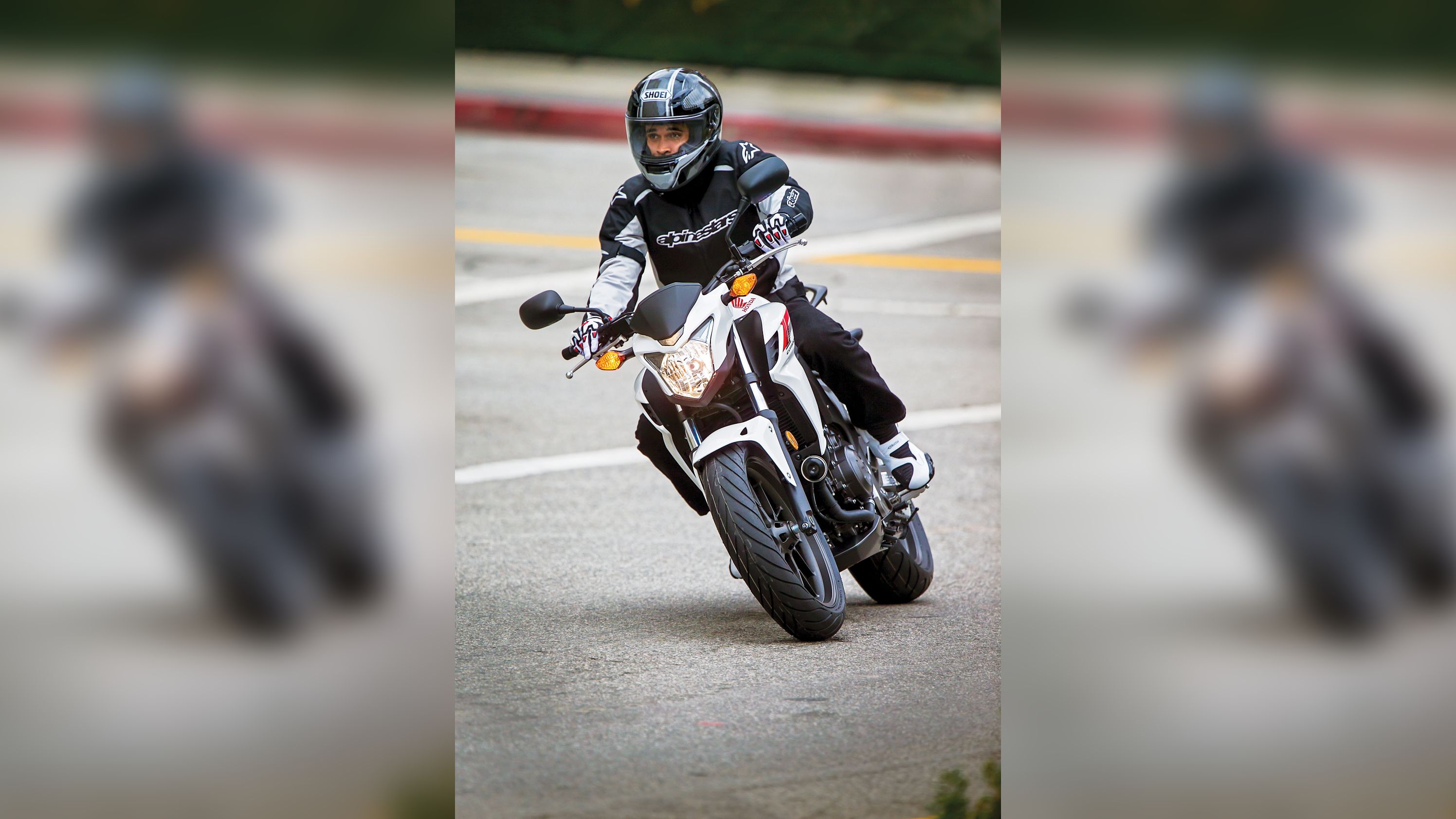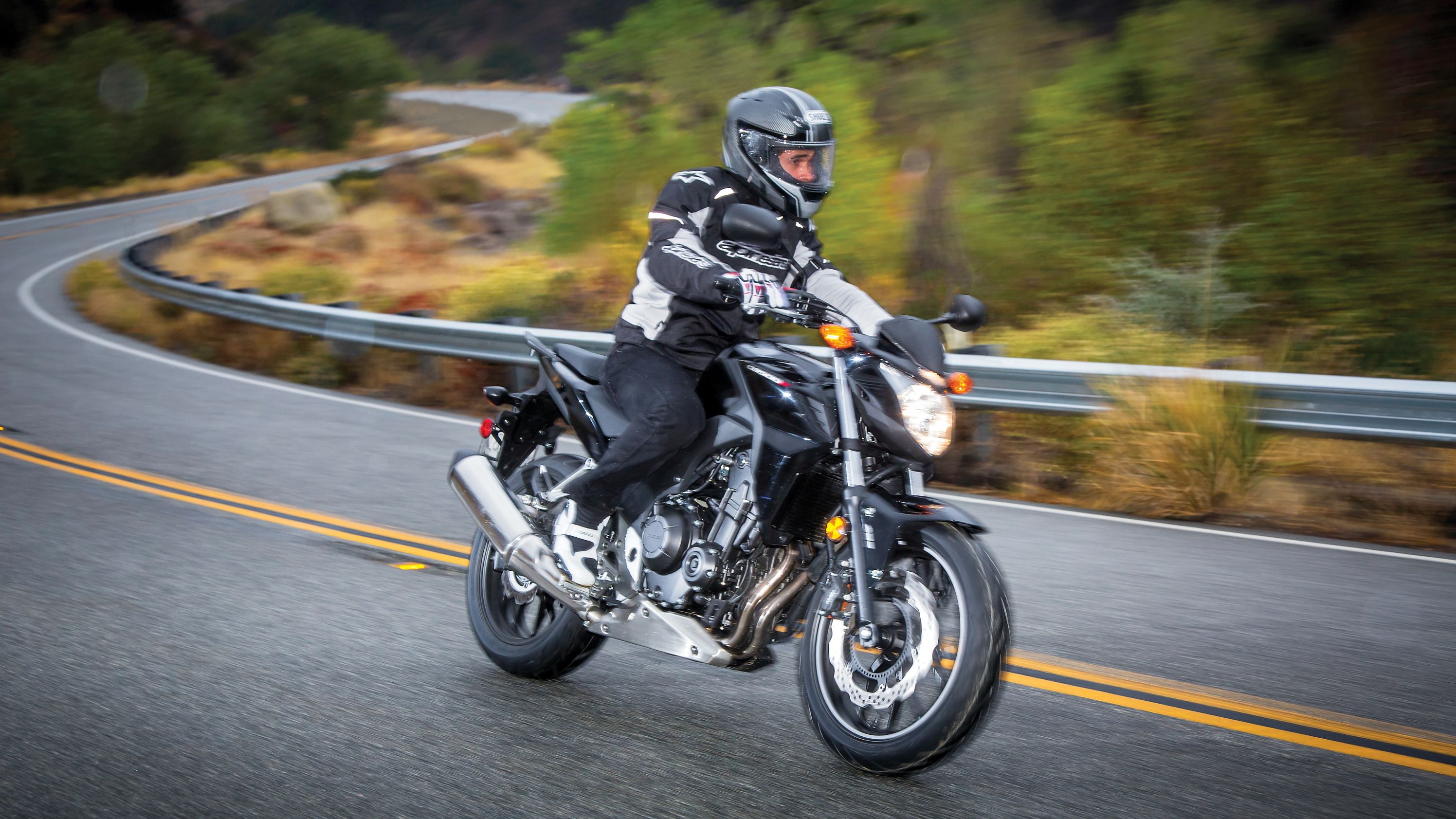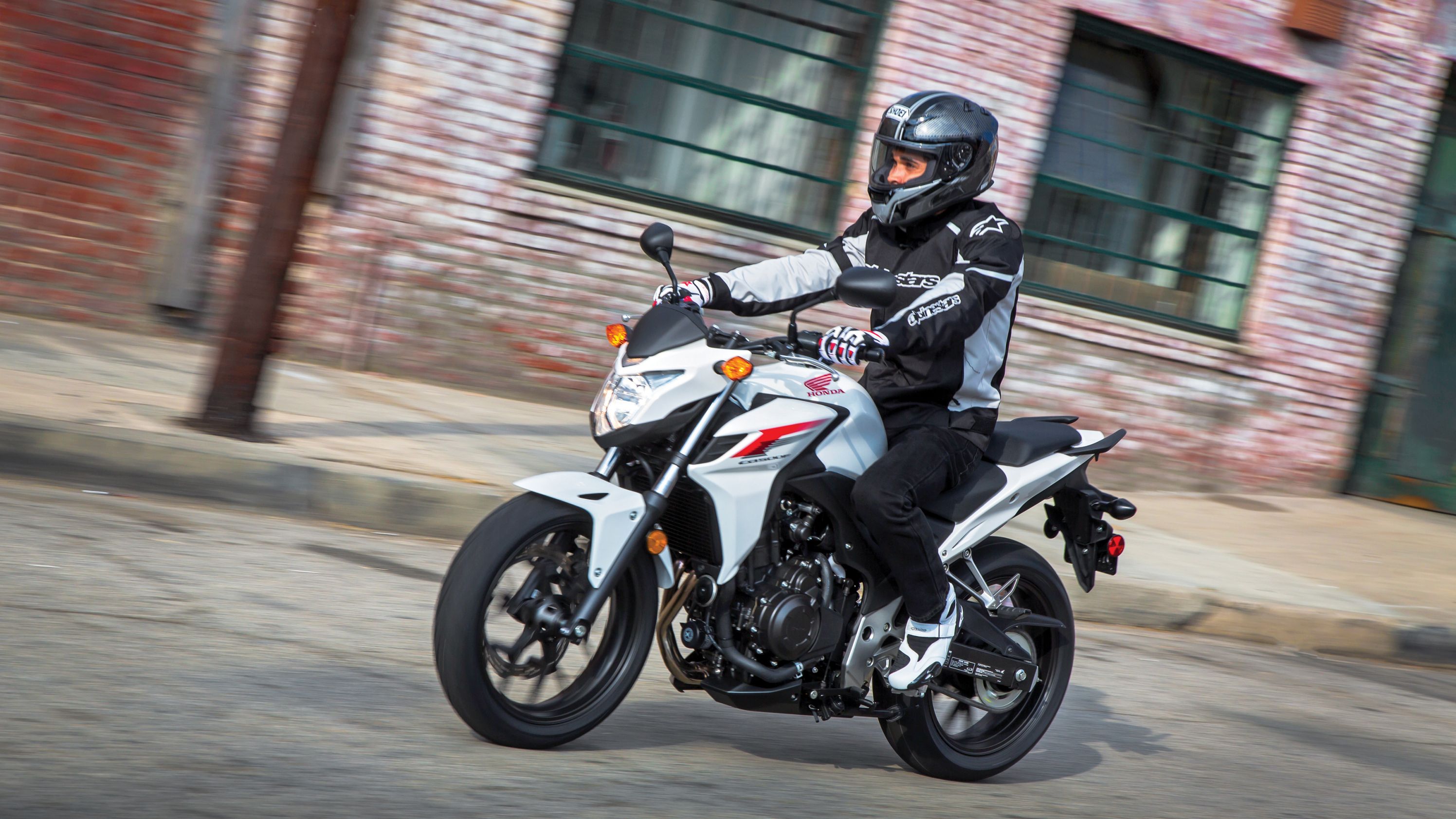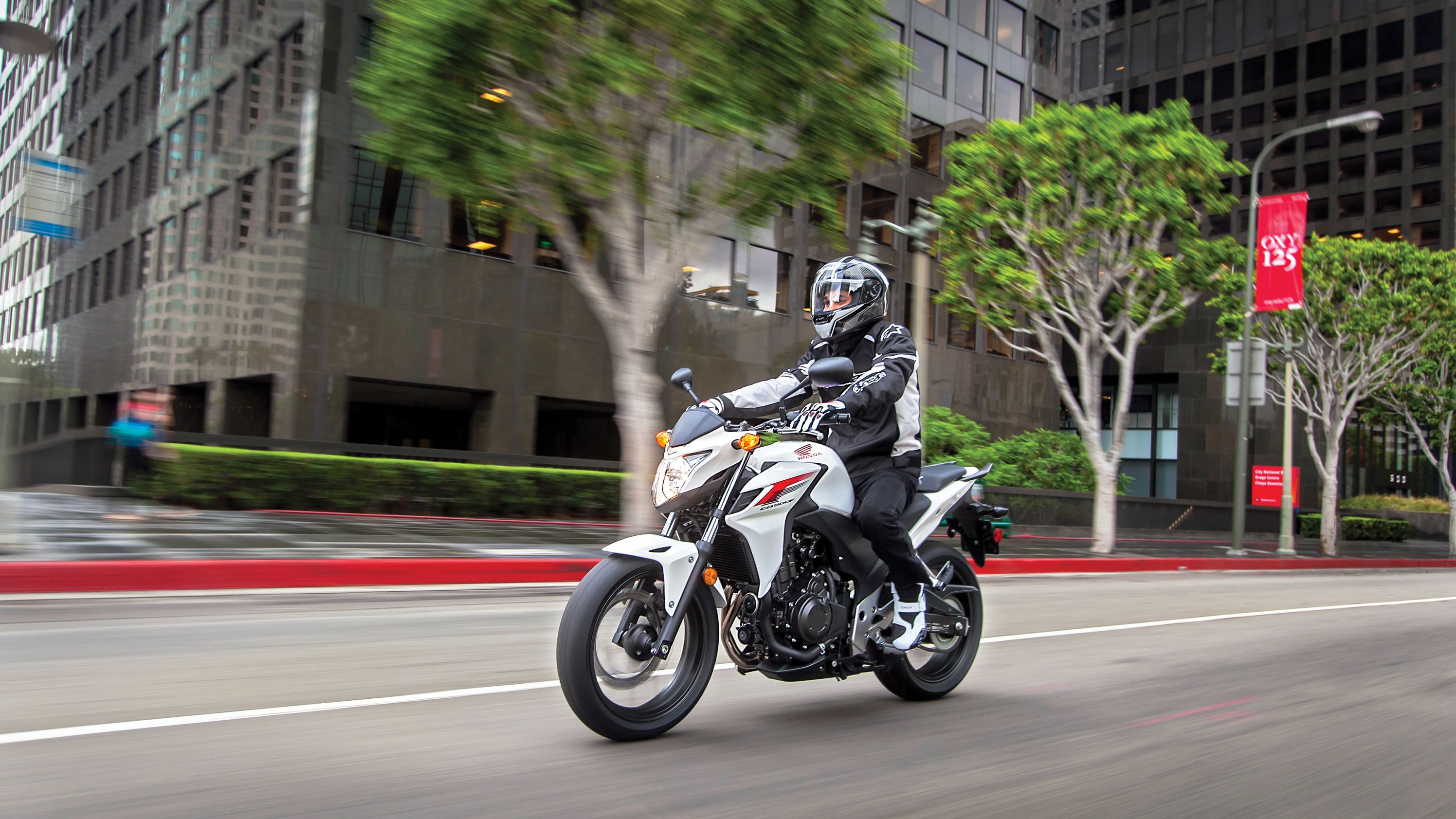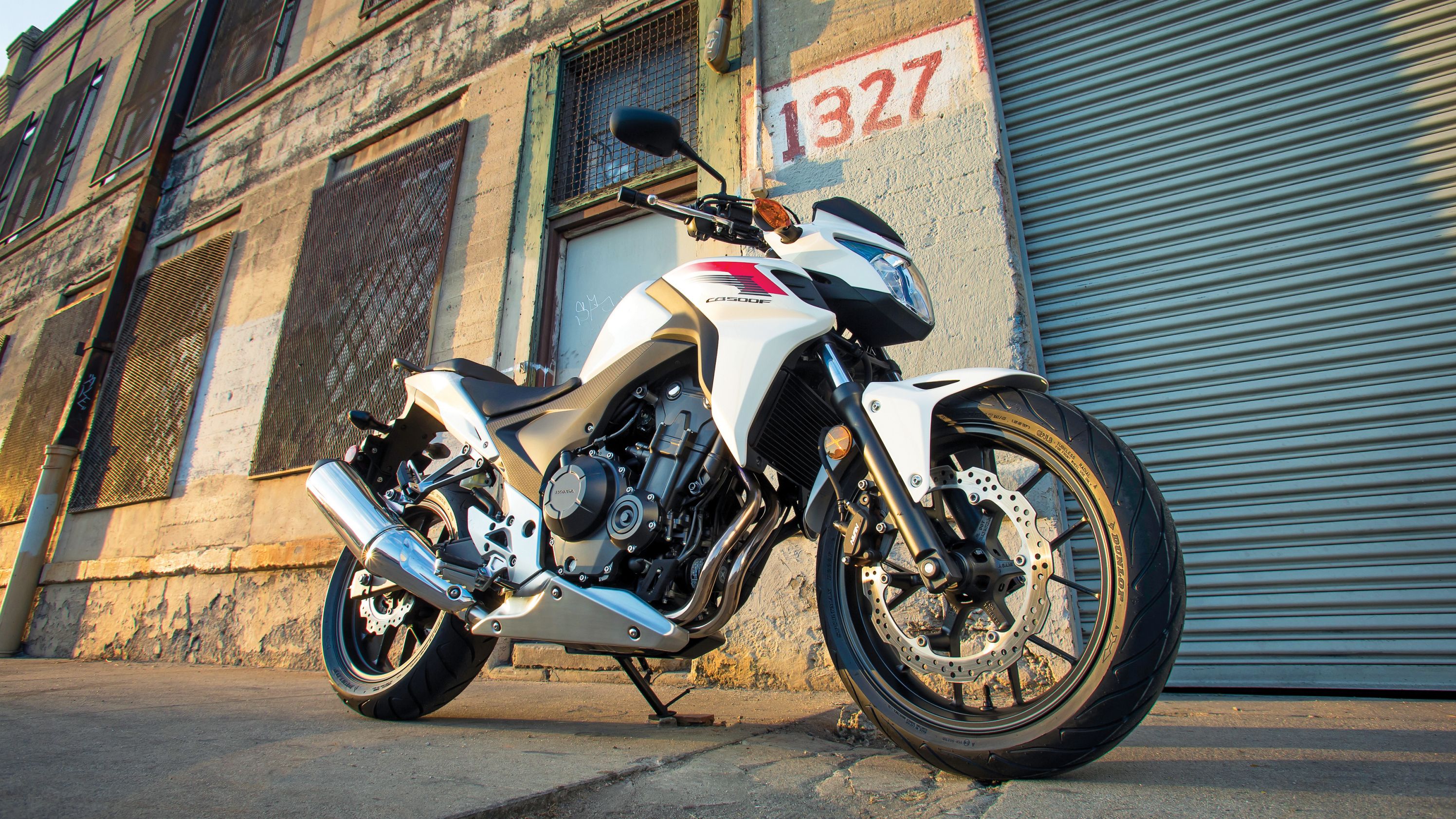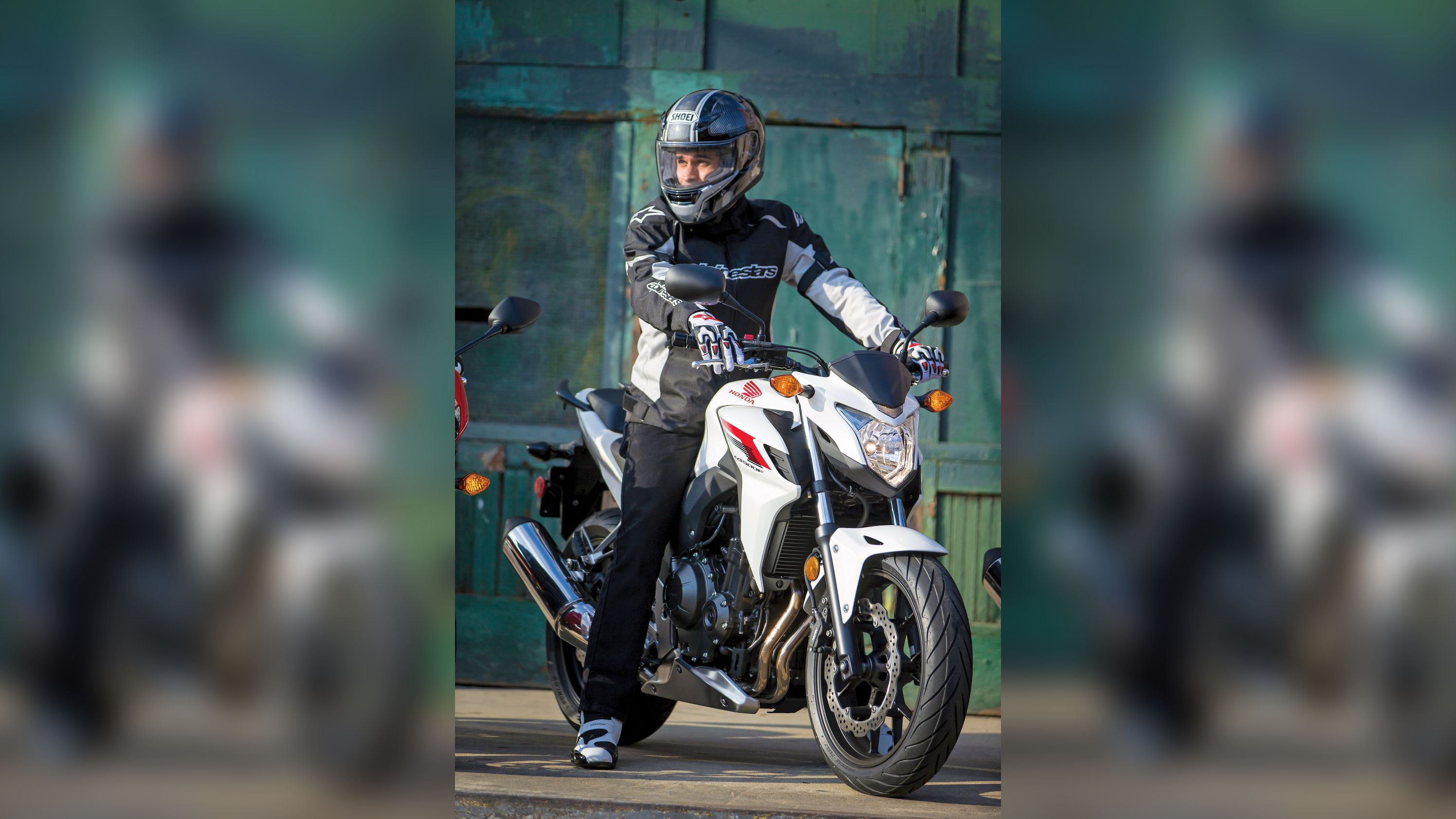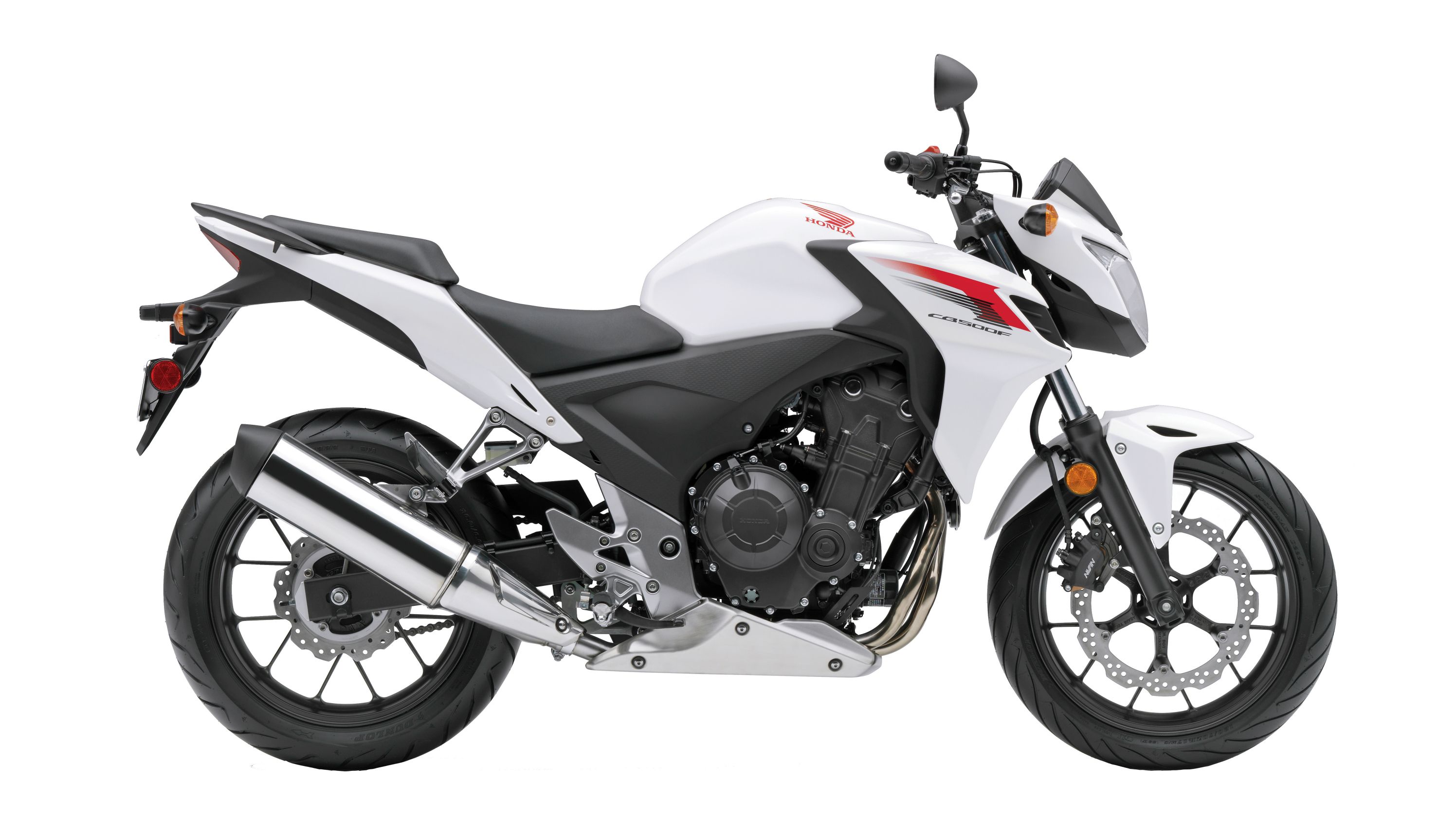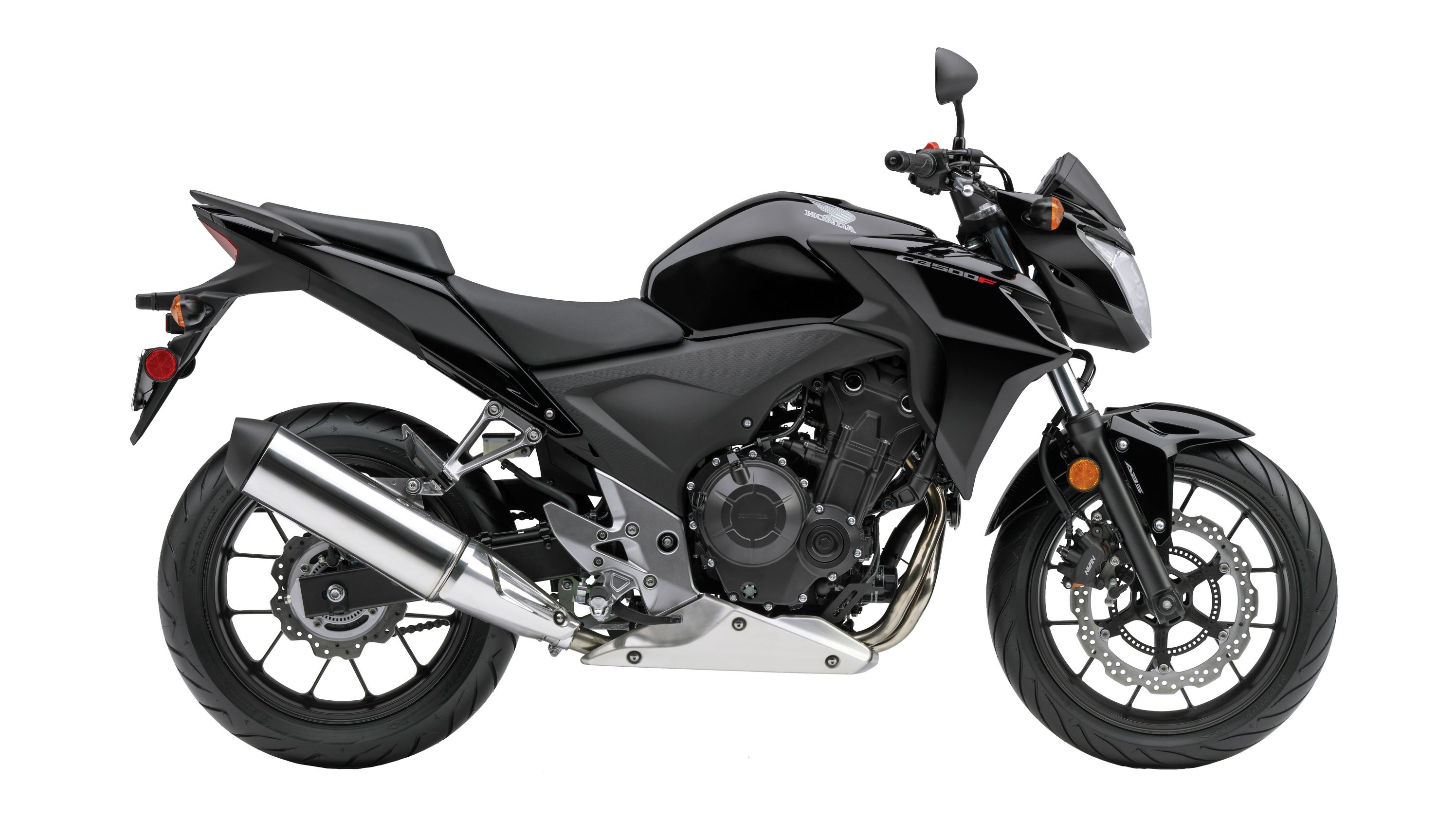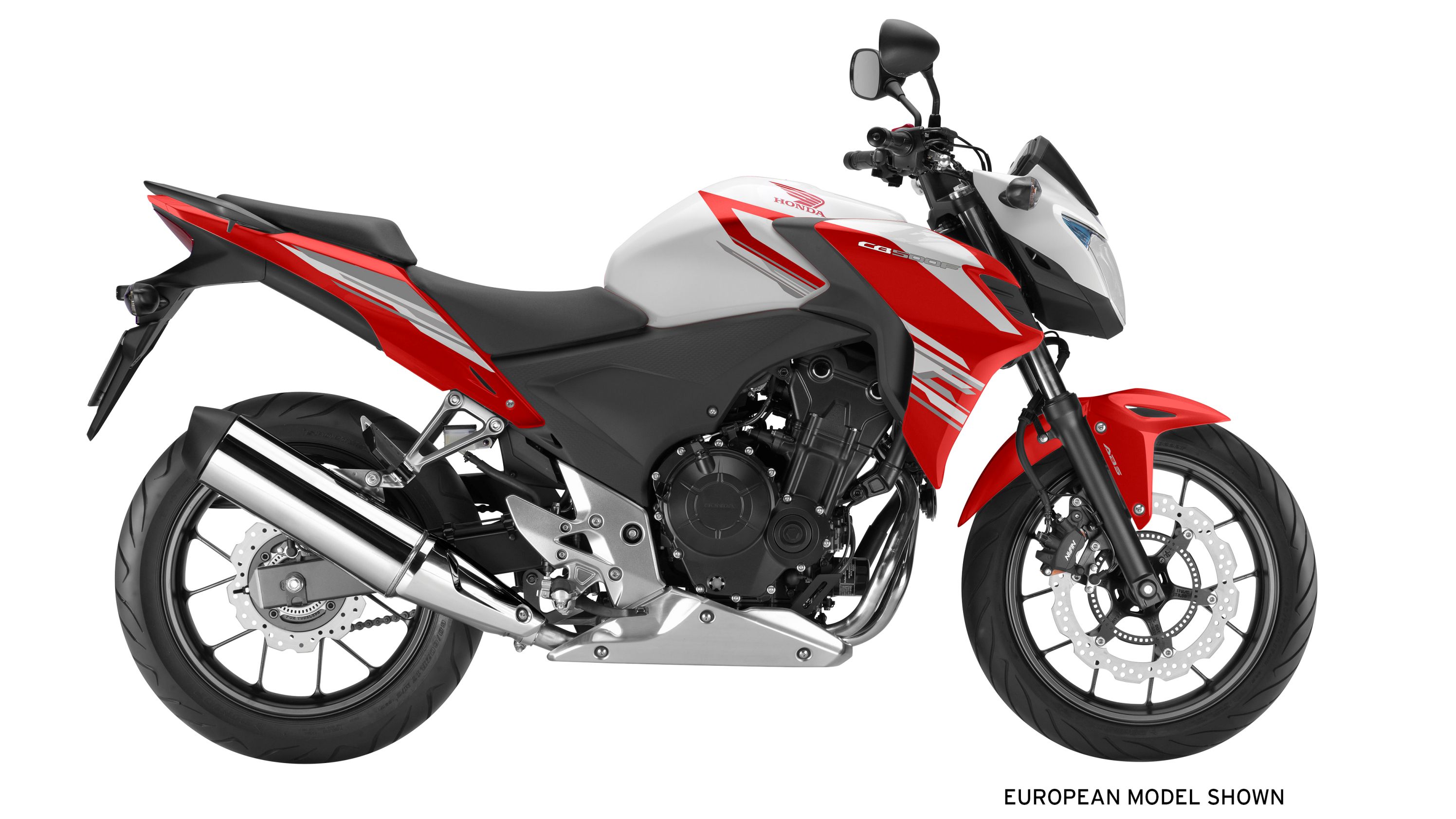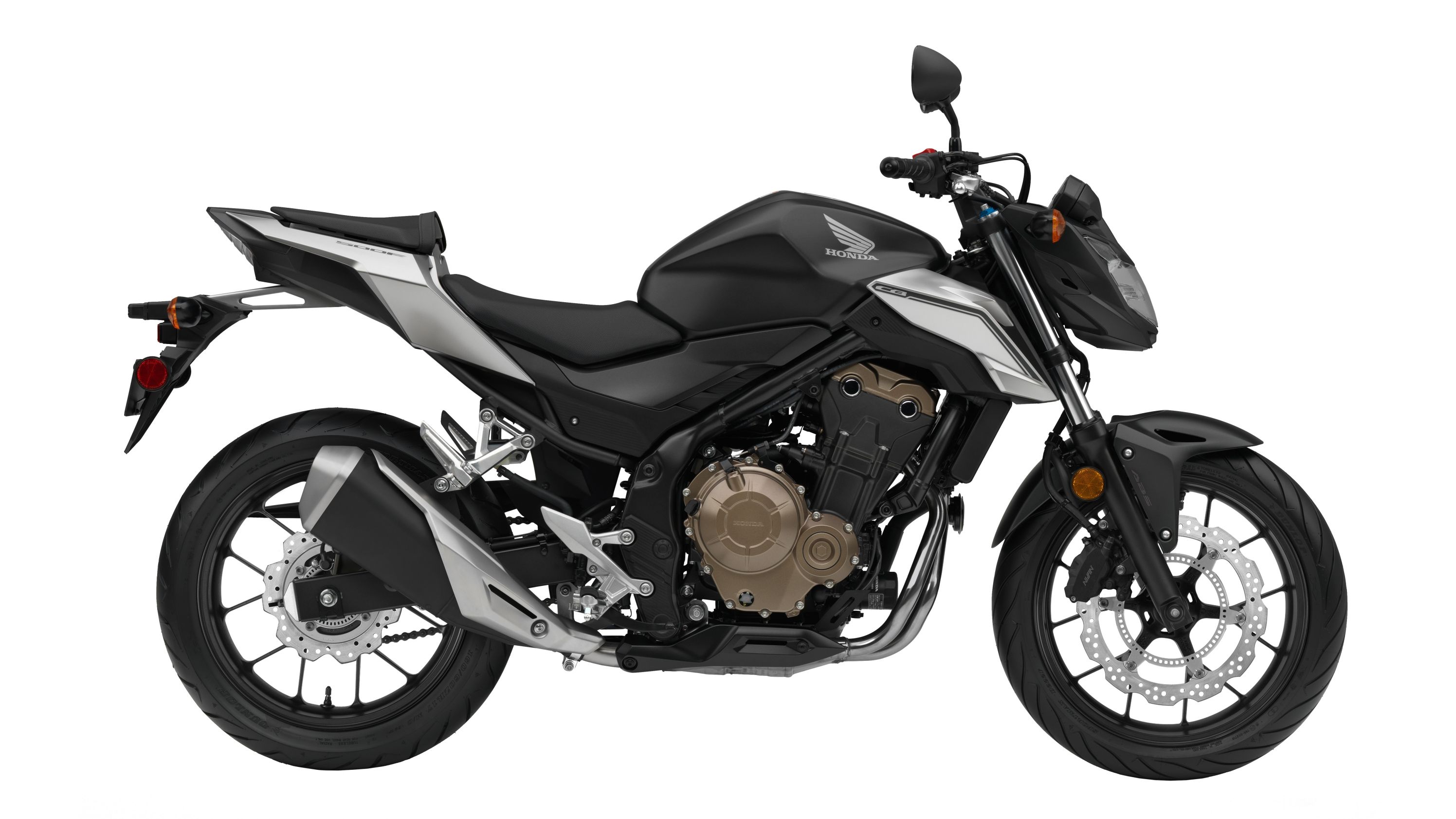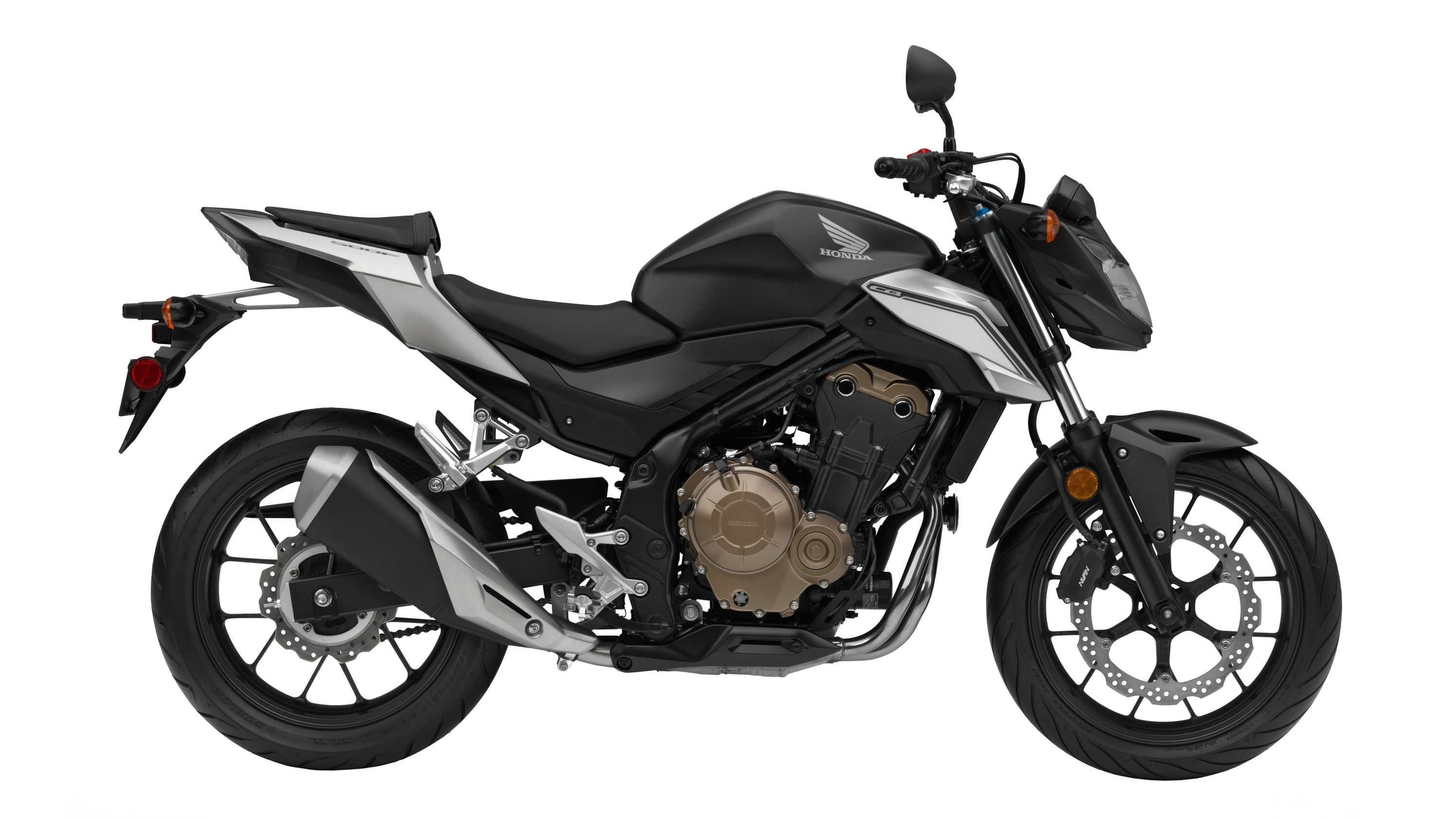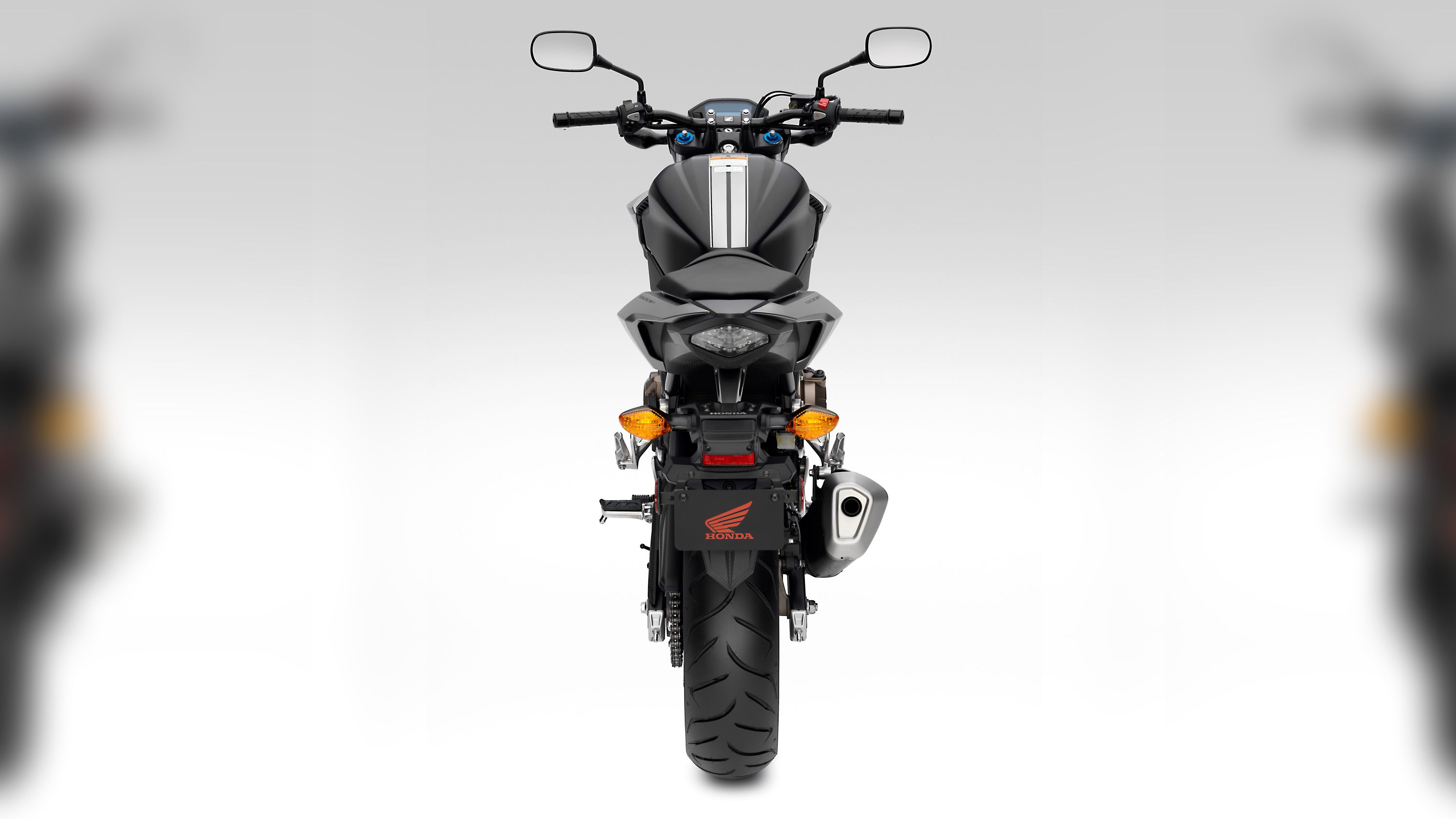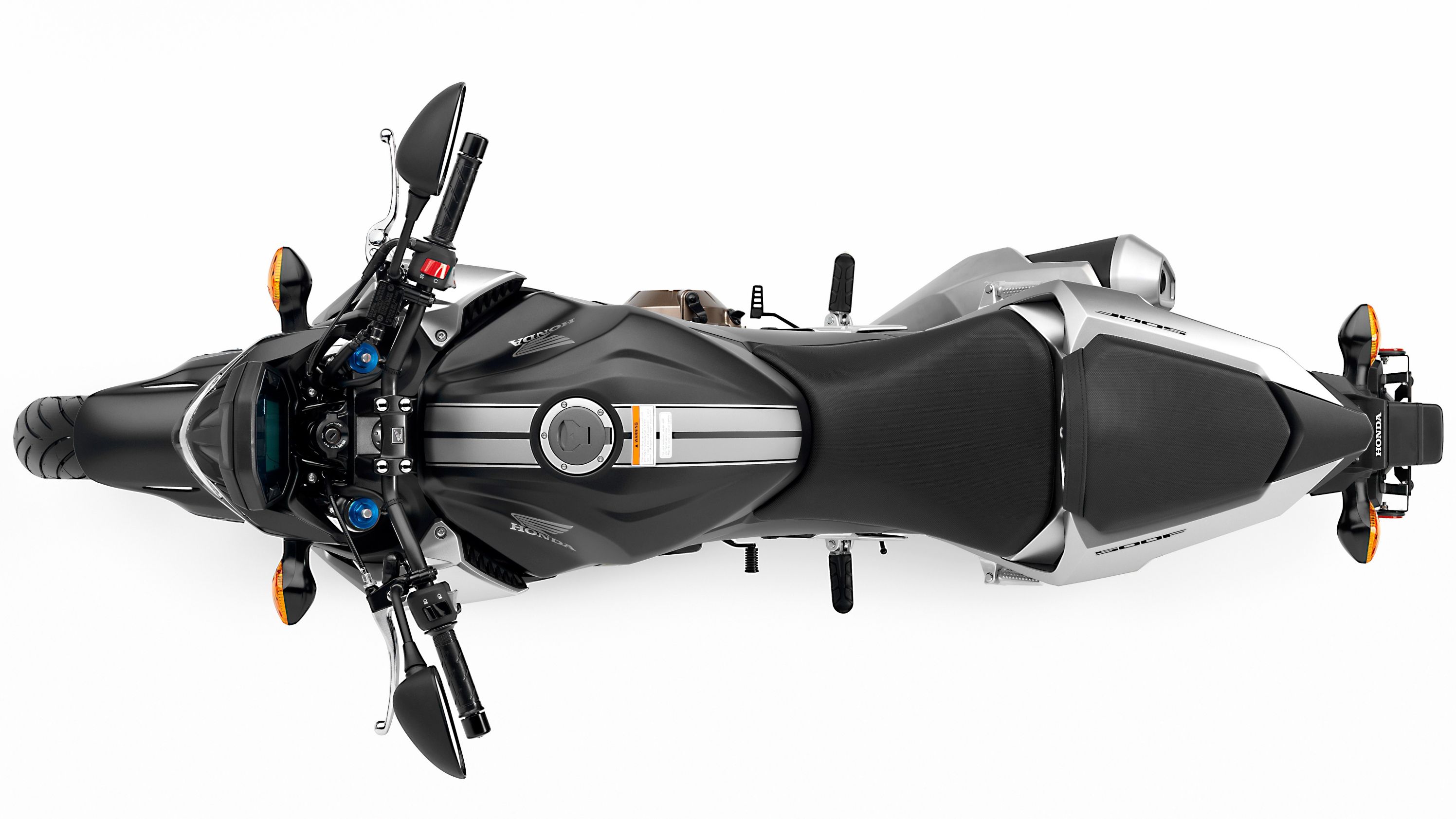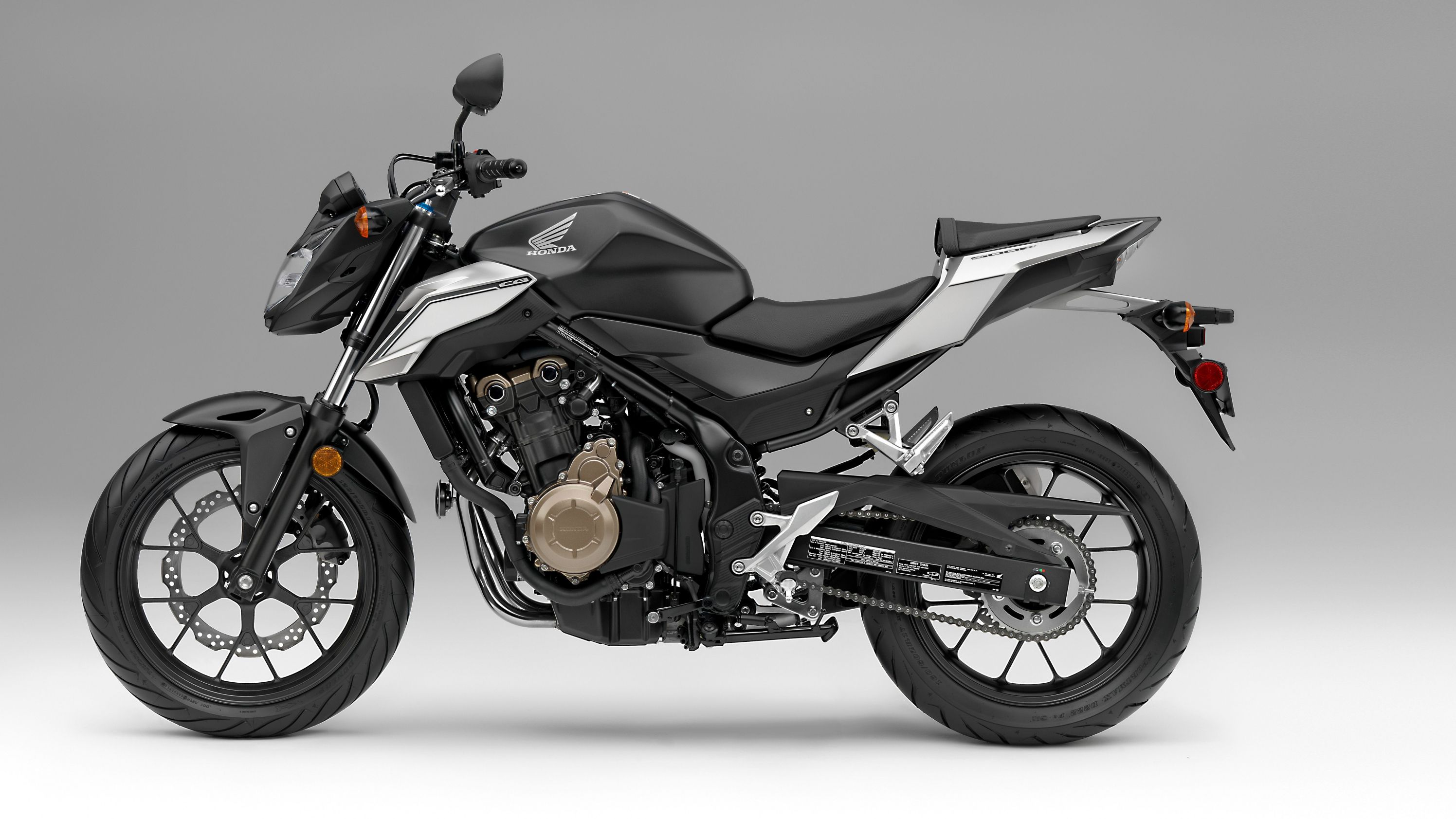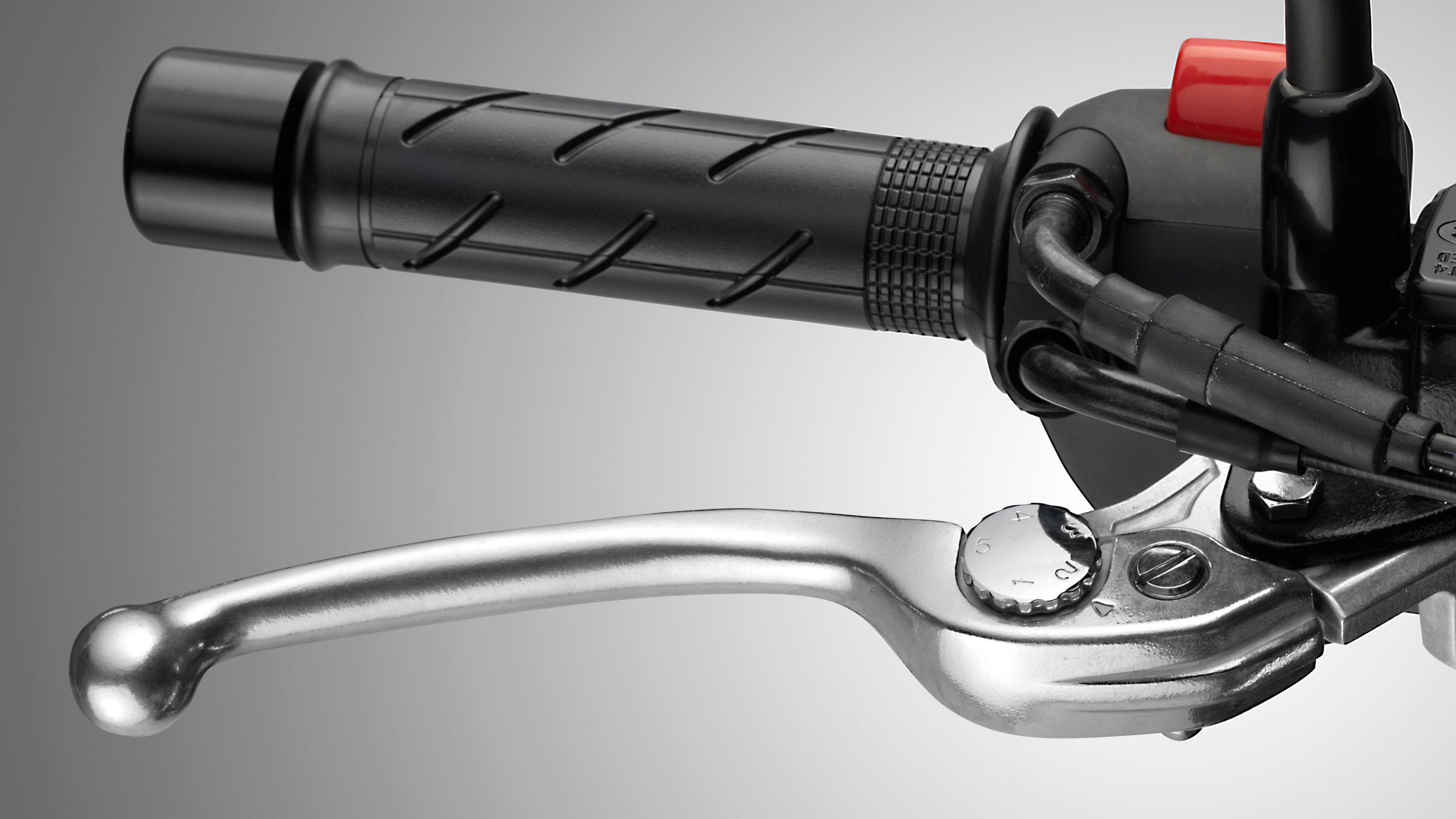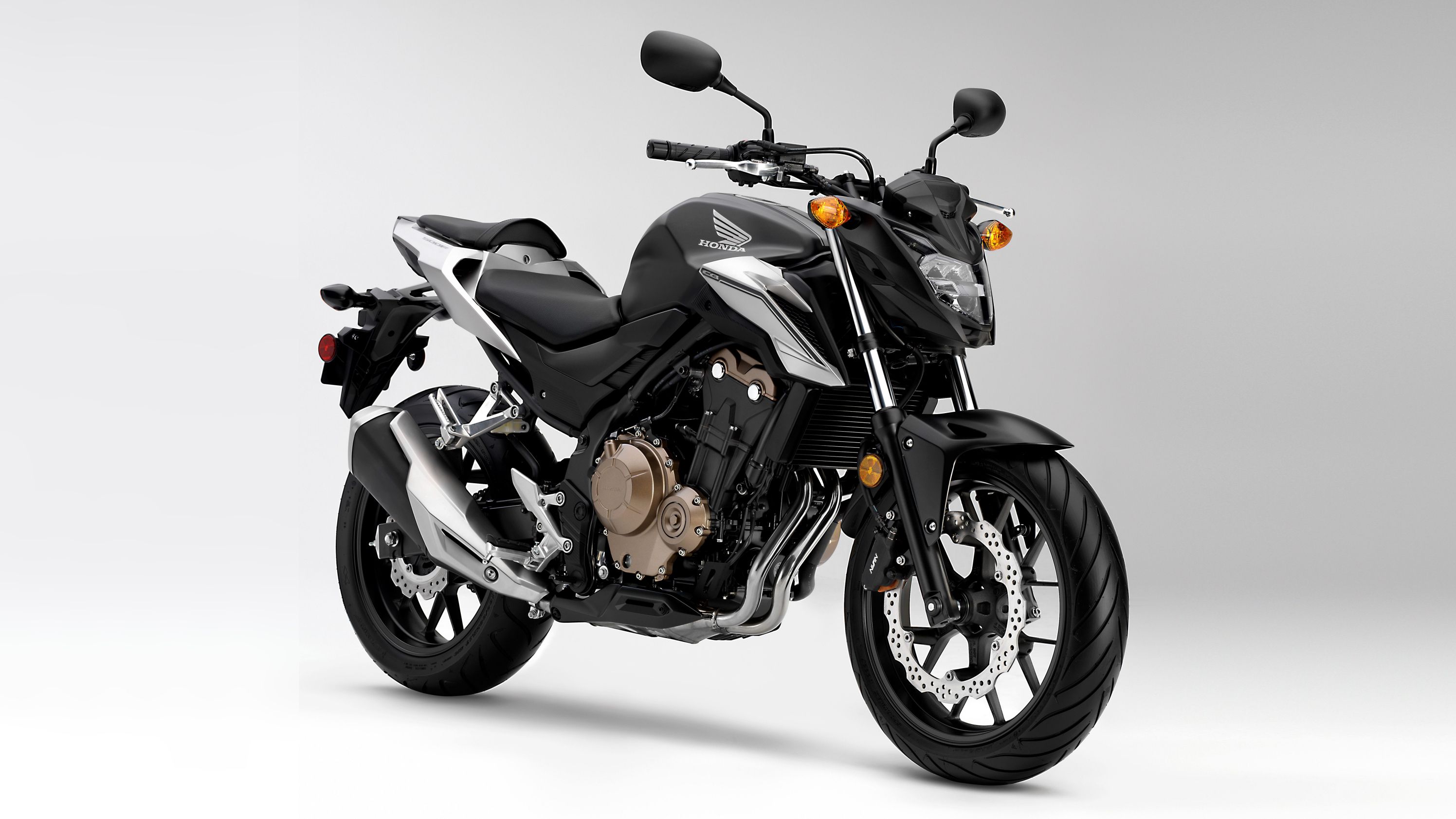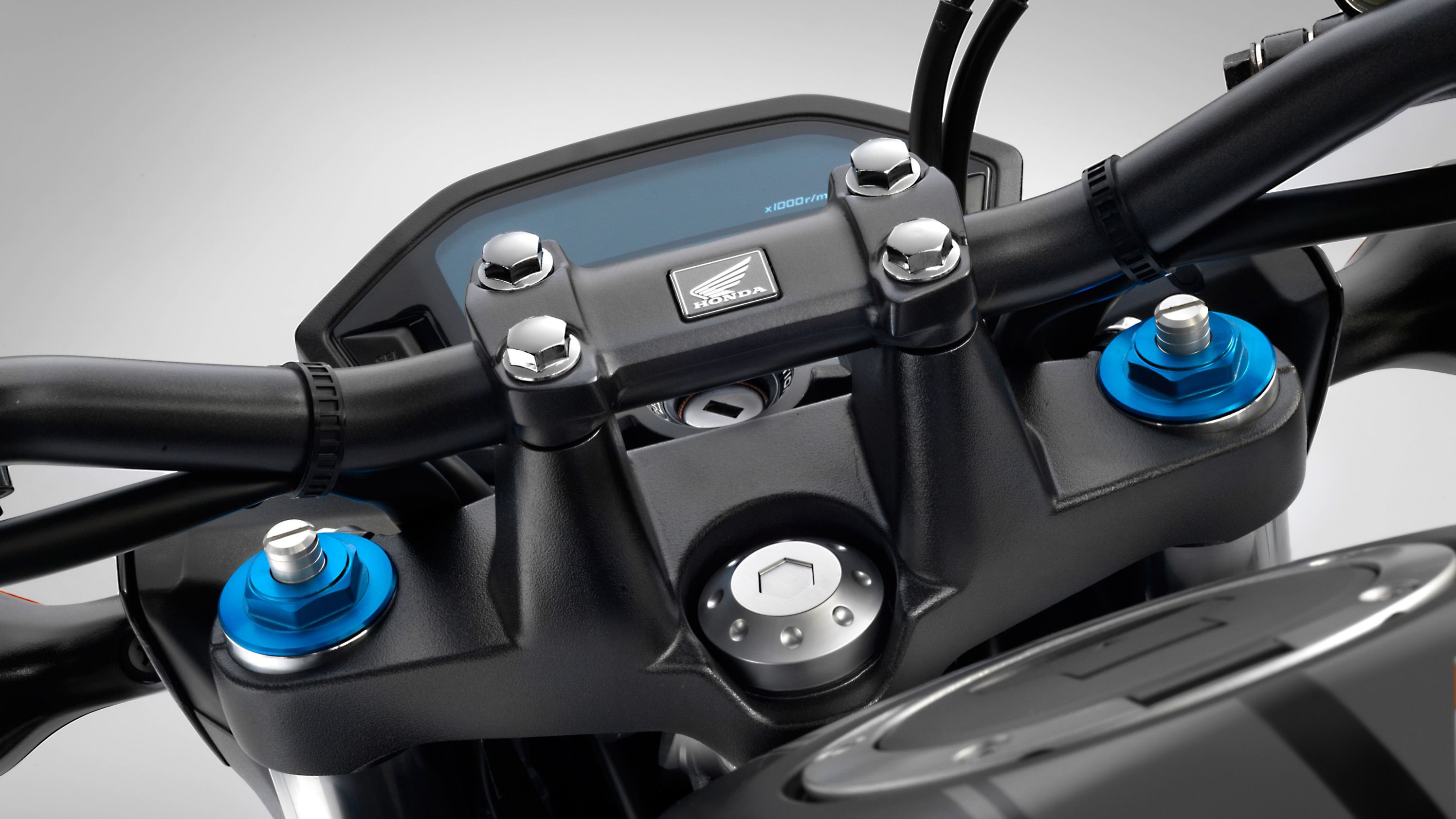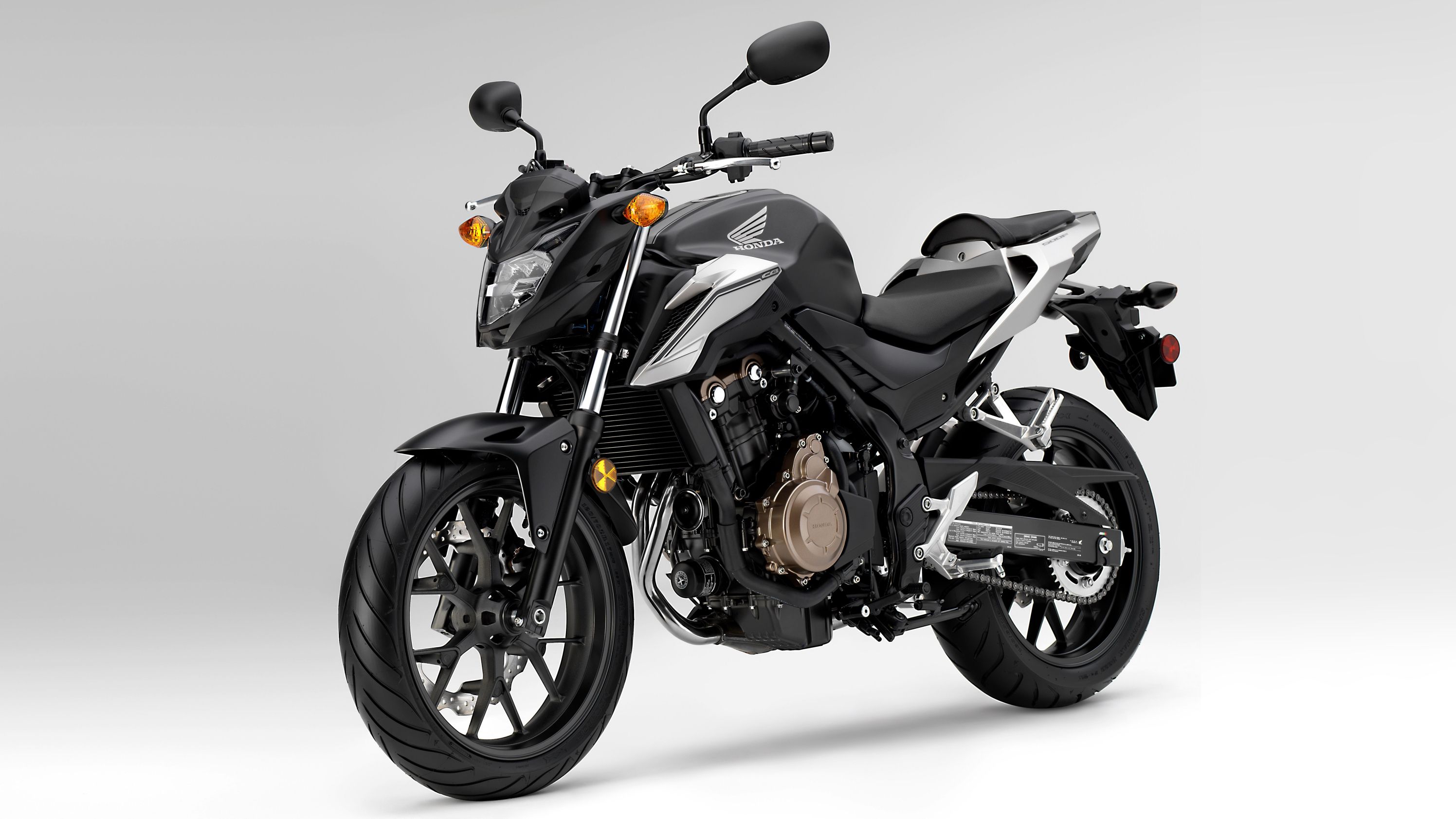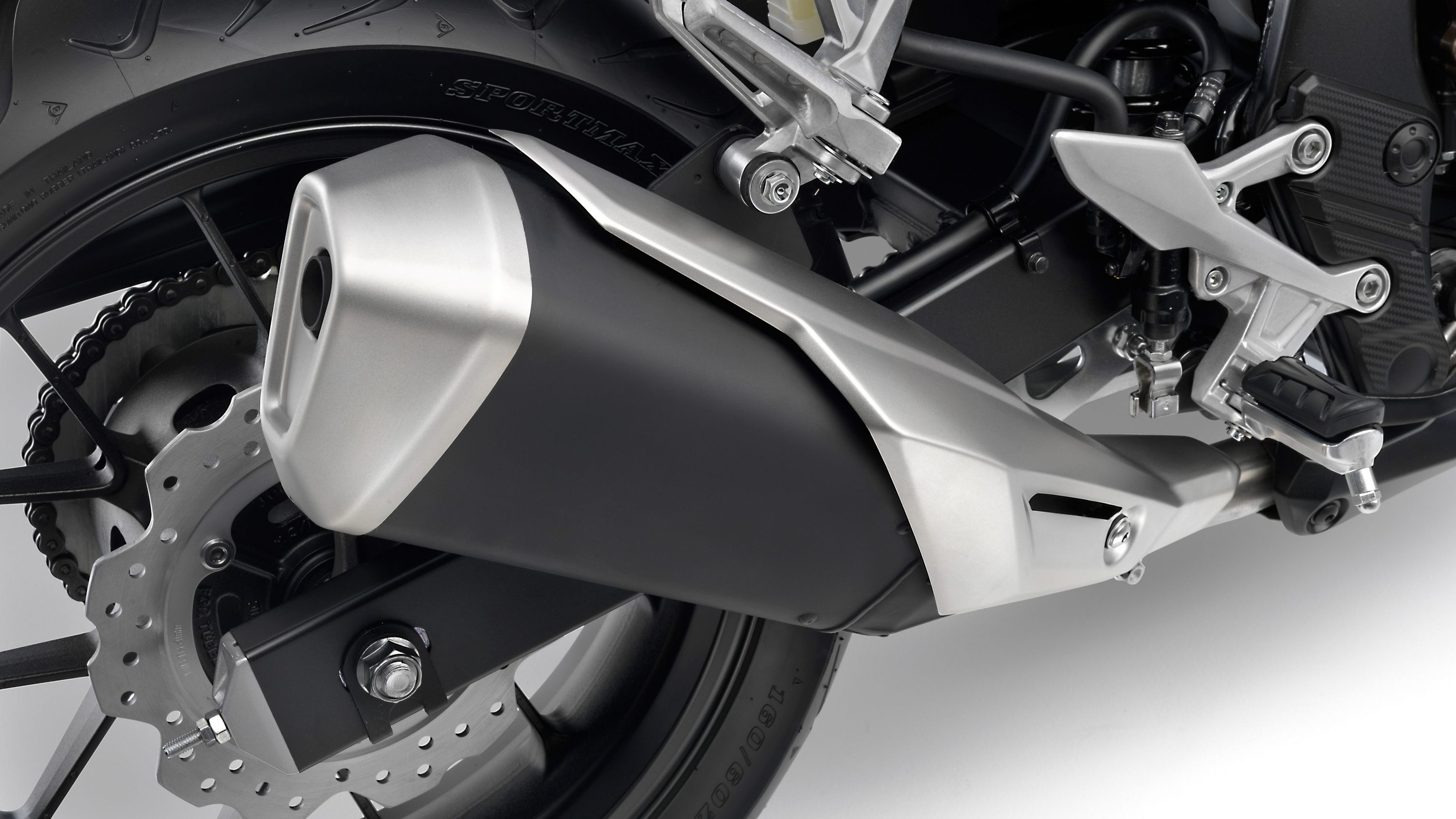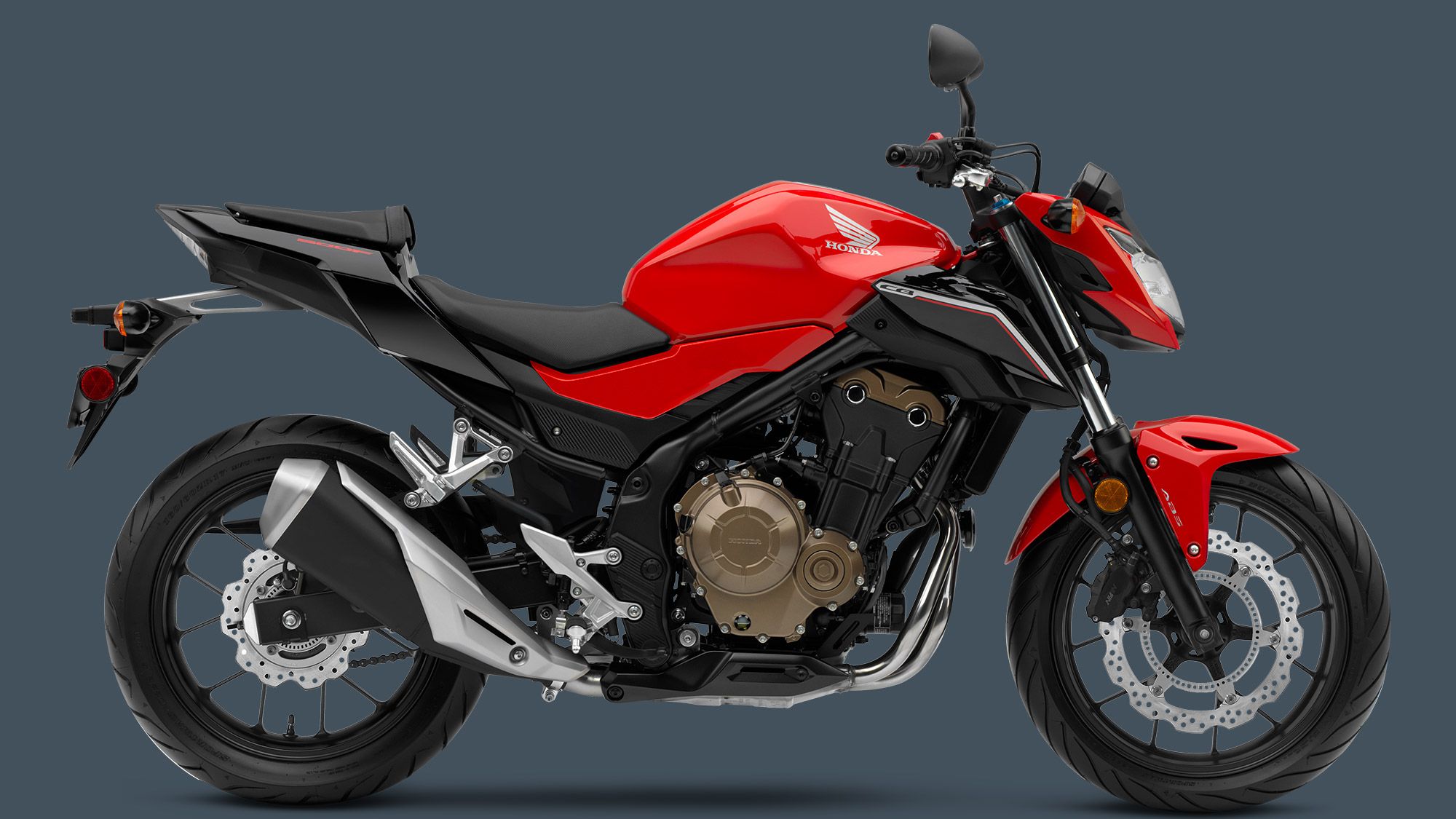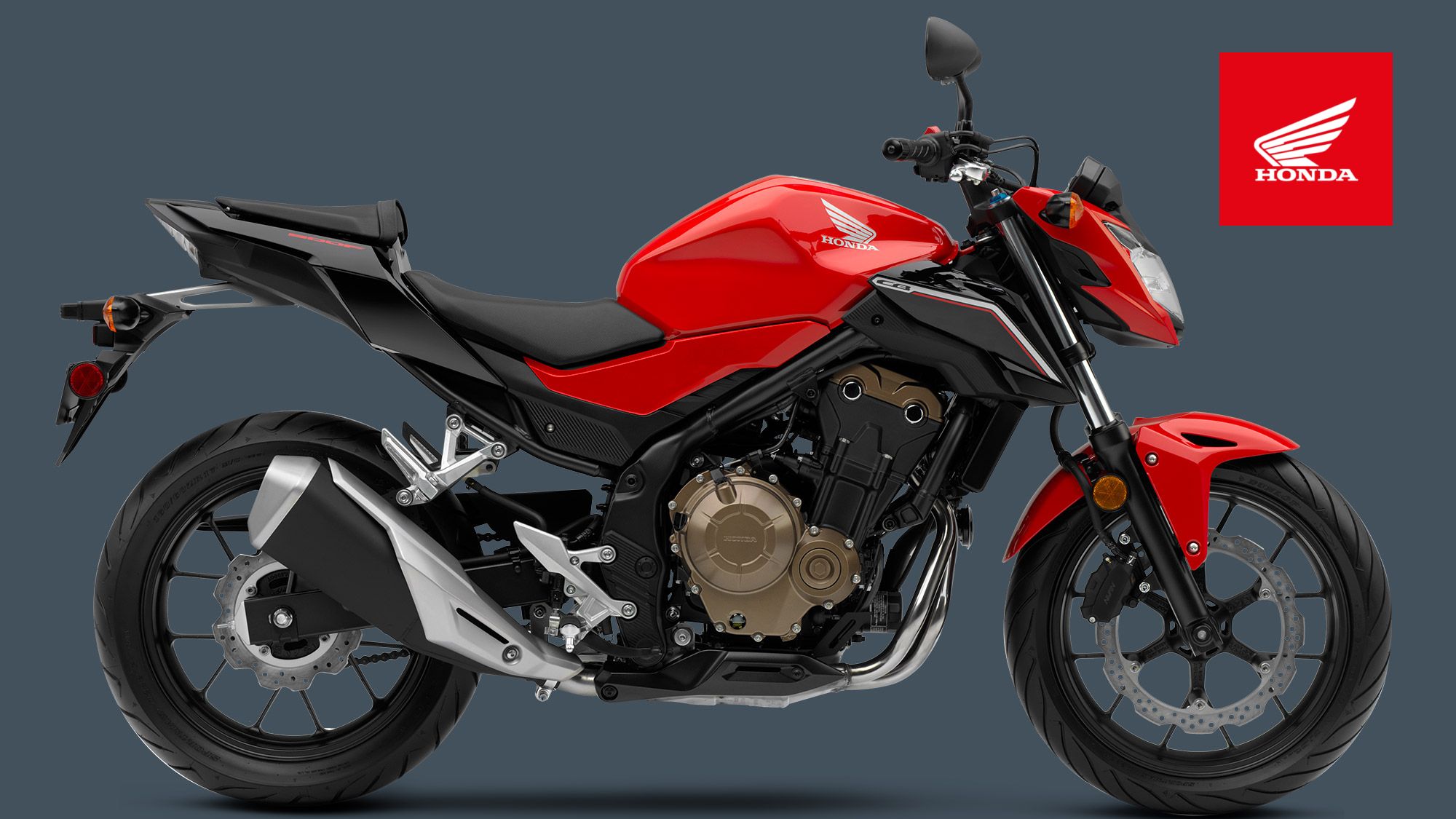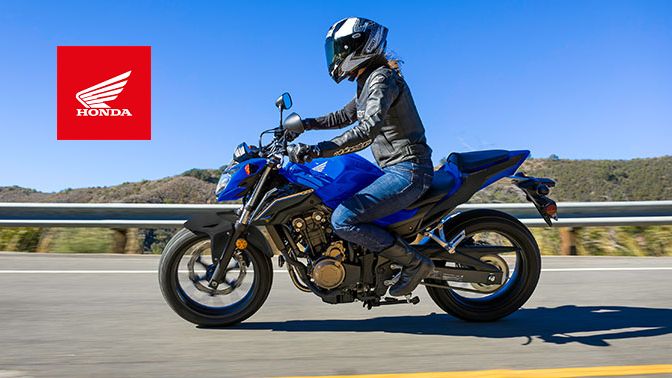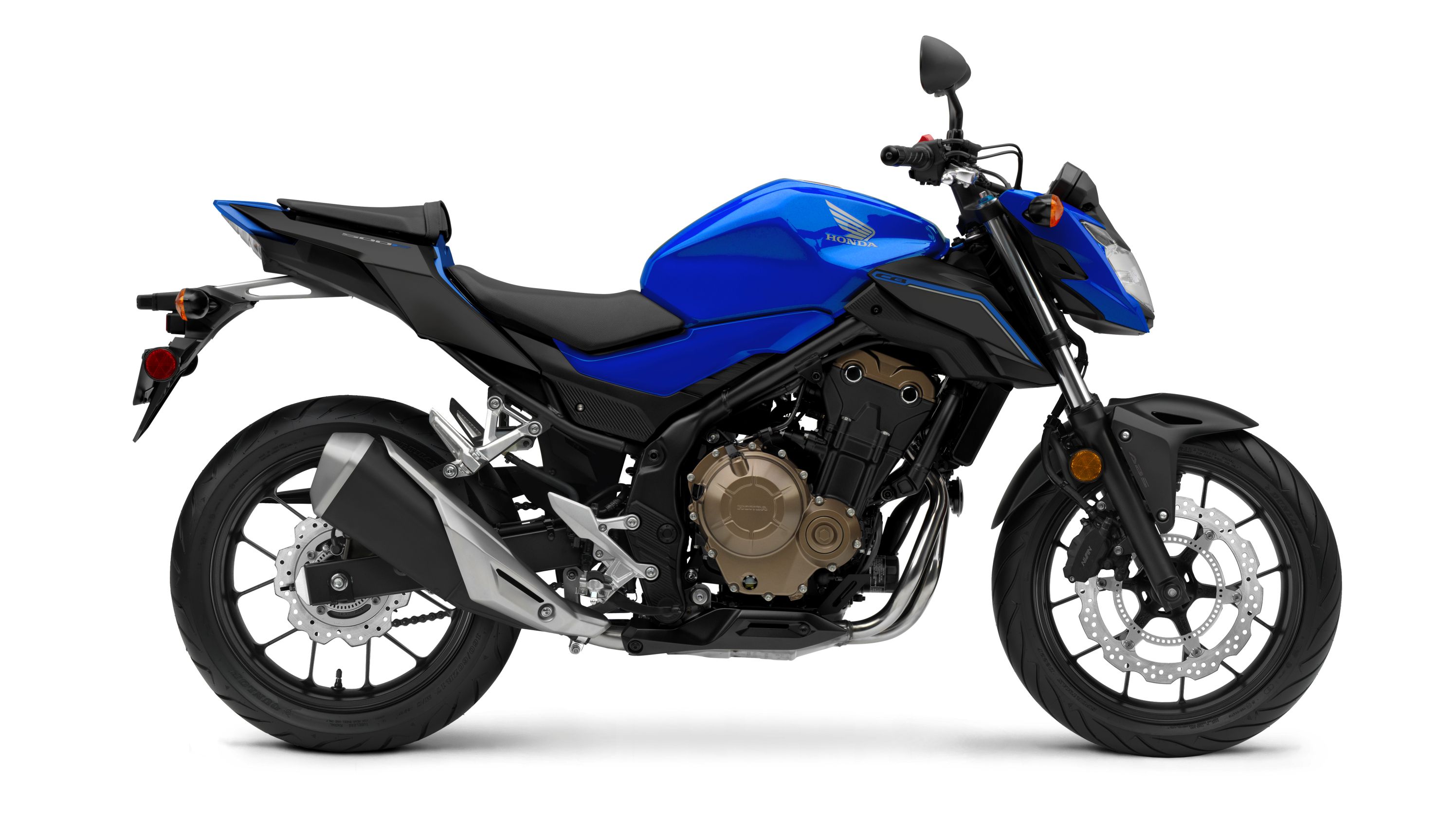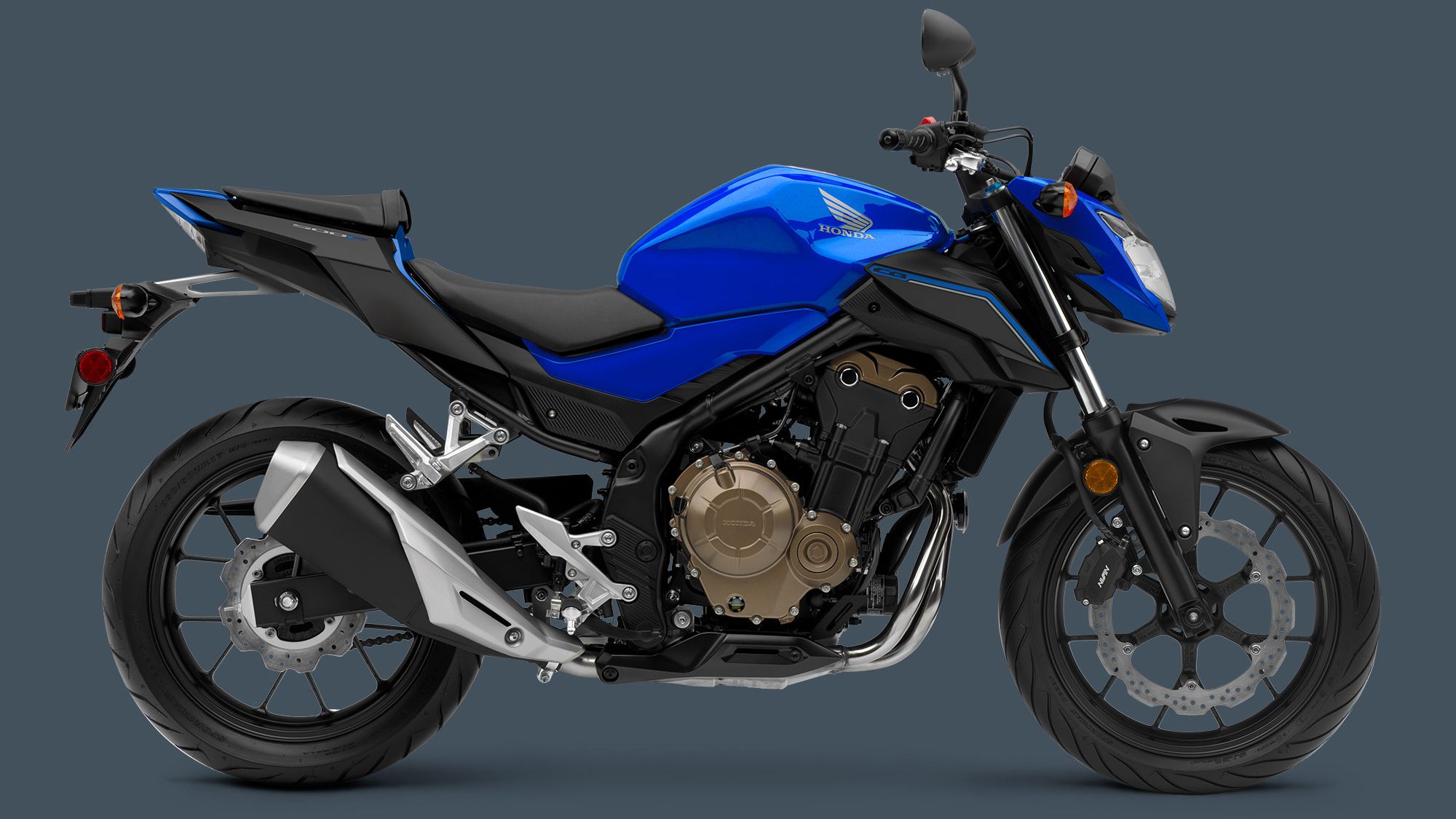Back in 2012, Honda presented the CB500F to the world at the EICMA Motor Show to bolster its “standard” category for the 2013 model year. This compact streetfighter sported Honda's then-new 471 cc in a rather naked layout with almost 50-horsepower on tap to push the 414-pound curb weight around, so it's safe to say that it definitely punches above its weight. This is at least part of the reason for its success and market popularity, and the factory has made tweaks here and there in an attempt to keep it fresh all the way into 2018 in order to maintain that momentum. Now that the family has matured somewhat and settled into its groove if you like, I want to take a look at the range to try and divine the secrets to its success.
Continue reading for my review of the Honda CB500F.
2013 - 2018 Honda CB500F
- Make: Array
- Model: 2013 - 2018 Honda CB500F
- Engine/Motor: Liquid-cooled parallel-twin
Design
Naked standards are sort of like the “gassers” of old in that they carry minimal appointments, and everything that doesn't contribute to speed either gets pared down or goes away entirely. This is certainly true for the snake-lean CB500F that carries just the merest little bit of fat in the form of a pair of angular upper cowlings that lend the front of the otherwise narrow bike some shoulders. Ahead of said shoulders, the LED headlight housing leads the way with an equally angular build that strikes me as having a sort of “robot centurion” look about it, but if we're honest, I think we can agree that naked bikes generally run with odd-looking lamp cans up front, so this is no surprise.
The cut-down and vented, red front fender really pops against the blackout lower fork sliders, but I think this bike would really benefit from incorporating the front turn signals with the mirrors, 'cause I ain't feeling the whisker lights sticking out from the headlight like that. Yeah, I know it's a common design feature in this genre, but that doesn't mean I have to like it.
A vestigial flyscreen serves as marvelous protection for the digital instrument display but little else, though that's also to be expected. From there, the angular, 4.4-gallon tank -- which saw a 0.3 gallon increase in 2016 -- defines the flylines as it tapers down to the narrow waist where tank and saddle meet. Honda doubles down on the angle-angle with the design of the saddle, which is cute and all, but I haven't been able to sit on one long enough to tell if those corners will get uncomfortable.
The minimal p-pad carries that look on back over the stylized subframe, and though the factory tucks the taillight (upgraded to LED for MY16) up underneath to keep the rear-end clean, whatever gains it garnered are immediately lost on the hangy-offy combination mudguard/plateholder/turn signal assembly.
Oh well, there's always the aftermarket for a nice hugger and a few relocation kits. The rest of the ride fits the naked genre quite well with an exposed drivetrain and frame structure that gives it a pleasing, raw look while leaving little to the imagination, and perhaps best of all, the rider triangle allows for a more comfortable around-town riding position than you typically get from a full-on sportbike.
Chassis
A diamond-type frame made up of 35 mm steel tubing serves as the mostly-visible skeleton for the “F.” The steering head comes set for 25.5 degrees of rake with 4.01 inches of trail on the 55.5-inch wheelbase -- numbers that trade just a skosh of agility for a bit of stability but doesn't turn cornering into a wrestling match by any means.
A set of 41 mm, rwu front forks beef up the front end a bit for MY16 and up, though not nearly as much as a set of inverted stems would to be sure. The good news here is that the forks come with adjustable spring preload to match the adjustments at the rear shock for a bit more in the way of adjustability than you typically get at this price bracket. Suspension travel clocks out at 4.3-inches up front with 4.7-inches out back for a fairly plush ride, depending on how you tune the preload of course.
Twin-piston anchors slow the dual 320 mm front discs with a single-pot binder to grab the 240 mm rear disc, and the F is available with or without ABS, so you can take it or leave it as you please. The front brake control comes with an adjustable lever, so you can tune it up for that perfect, two-finger ready position over a range of hand sizes. Cast, 17-inch wheels round out the rolling chassis with a fat 120/70 up front and fatter 160/60 in back.
|
Front Suspension: |
41mm fork; 4.3 inches travel |
|
Rear Suspension: |
Pro-Link® single shock with nine-position spring preload adjustability; 4.7 inches travel |
|
Front Brake: |
Twin-piston caliper with single 320mm wave disc |
|
Rear Brake: |
Single-caliper 240mm wave disc |
|
Front Tire: |
120/70-17 |
|
Rear Tire: |
160/60-17 |
Drivetrain
Propulsion duties fall to the liquid-cooled, parallel-twin mill that runs a nearly-square 67 mm bore and 66.8 mm stroke for a total displacement of 471 cc. The crank pins are offset by 180 degrees with a light counter-balancer that comes set up specifically to reduce the rocking couple while simultaneously lowering the rotational mass of the engine. Internally, the cases come with pressure-relief holes that allow for reduced pumping losses as the air gets displaced from section to section, and the piston rings come with annular grooves meant to reduce friction by aiding oil flow around the perimeter, both of which help the engine spool up and stay spooled.
But, how hard does it punch, you ask? Well, it manages a total of 49.6-horsepower at 8,500 rpm with 31.7 pounds o' grunt at 7 grand-- and bear in mind, it only has to push around 414 pounds plus rider(s) and cargo -- so it is safe to say it hits hard enough to let you get yourself in a whole heap of trouble. An updated, six-speed transmixxer crunches the ratios, and it, too, benefited from the 2016 update with tweaks to the shift mechanism meant to help it deliver smoother shifts.
|
Engine Type: |
471cc Liquid-Cooled Parallel-Twin |
|
Bore And Stroke: |
67.0mm x 66.8mm |
|
Compression Ratio: |
10.7:1 |
|
Induction: |
PGM-FI with 34mm throttle bodies |
|
Ignition: |
Computer-controlled digital transistorized with electronic advance |
|
Valve Train: |
DOHC; four valves per cylinder |
|
Transmission: |
Six-speed |
|
Final Drive: |
O-ring-sealed chain |
Price
The 2018 CB500F rolls for $6,399 with ABS protection, and $6,099 without, which is a carry-over from the 2017 MSRP. For 2018, it is available in Candy Blue and Matte Black two-tone colorway.
|
Colors: |
|
|
2016: |
Matte Black Metallic/Silver |
|
2017: |
Red |
|
2018: |
Candy Blue/Matte Black |
|
Price: |
|
|
2016: |
$5,999 (ABS: $6,299) |
|
2017, 2018: |
$6,099 (ABS: $6,399) |
Competitor
There's a significant gap in the market that Honda seems to have all to itself. While there are a number of kinda-close choices, none hit the nail exactly on the head. In the low-ball sector, Yamaha's YZF-R3 rolls up with a smaller, 321 cc powerplant. While it may appeal to the same sort of buyer that might be looking for an entry-level ride, the truth is, they are likely to outgrow the R3 sooner rather than later, especially if it is pressed into service as a commuter with any interstate riding at all along your route. Not only that, but its almost fully faired, and totally lacks the Mad Maxx vibe you get with a naked. The price is attractive at $4,999 ($5,299 with ABS), but if you think you will be looking to upgrade in the foreseeable future, you'd be better off going straight for the Honda.
Moving on. Another Yamaha that almost works, but not quite, is the FZ-07. It carries itself with the same naked panache, and even has a similar look up front with the small upper fairing and (ridiculous) turn signals sprouting from the headlight, but the Yammy packs 689-cubes into the mill for a significant displacement advantage, and pricing takes a leap up to $7,499 for the ABS version. At 471 cc, the Honda CB500F is still arguably noobie friendly, but the FZ-07 isn't what I would really call entry-level as far as the skill required to keep it under control, and so that particular type of buyer should also look to the Red Riders for some wheels.
My final sort-of competitor comes from the remaining member of the Big Four. Kawasaki's Z650 ABS toes the naked-genre line in the looks department, but once again, packs more cubeage into the plant, thus moving it away from the entry-level sector and into the next-bigger range. Pricing reflects this, of course, so the $6,999 sticker ($7,399) makes it more appropriate for someone's first upgrade, rather than their first ride. So as you can see, Honda fills a niche that nobody else is really touching right now, and it has this corner all to itself for the time being. I could try to poke holes in that plan, but at the end of the day, you just can't argue with success. The proof will be over time when we see if Honda abandons that sector, or if the other join it at the half-liter mark.
He Said
“Ridiculous headlight aside, I am, once again, in a position where I actually like the looks of a Honda product. Yeah, I know, the bikes of the '80s and '90s are (thankfully) in the rear-view mirror, but that's when my tastes were cultivated, and the ugly ran strong in those old Hondas. If you disagree, you just aren't old enough to remember. Salient point is; there is (almost) nothing wrong with the looks of this ride.”
She Said
My wife and fellow motorcycle writer, Allyn Hinton, says, "The CB500F is the naked version in the CB500 stable. It's siblings are the CB500R, which is the sportbike version, and the CB500X, which is the more adventure-oriented version. The concept is simple; make a good, basic, no-frills bike to give folks reliable transportation. Make it unintimidating for new riders, but fun enough to experienced riders. It has good power low in the range, and while nothing about the bike is awesome, it is an honest, uncomplicated ride for the money. If you're new to two wheels, or just looking for transportation that isn't about penis size, and being pretentious isn't what it's all about, this could be your Huckleberry."
Specifications
|
Engine & Drivetrain: |
|
|
Engine Type: |
471cc Liquid-Cooled Parallel-Twin |
|
Bore And Stroke: |
67.0mm x 66.8mm |
|
Compression Ratio: |
10.7:1 |
|
Induction: |
PGM-FI with 34mm throttle bodies |
|
Ignition: |
Computer-controlled digital transistorized with electronic advance |
|
Valve Train: |
DOHC; four valves per cylinder |
|
Transmission: |
Six-speed |
|
Final Drive: |
O-ring-sealed chain |
|
Chassis: |
|
|
Front Suspension: |
41mm fork; 4.3 inches travel |
|
Rear Suspension: |
Pro-Link® single shock with nine-position spring preload adjustability; 4.7 inches travel |
|
Front Brake: |
Twin-piston caliper with single 320mm wave disc |
|
Rear Brake: |
Single-caliper 240mm wave disc |
|
Front Tire: |
120/70-17 |
|
Rear Tire: |
160/60-17 |
|
Dimensions & Capacities: |
|
|
Rake: |
25.5 degrees (caster angle) |
|
Trail: |
102mm (4.01 inches) |
|
Wheelbase: |
55.5 inches |
|
Seat Height: |
30.7 inches |
|
Fuel Capacity: |
4.4 gallons |
|
Curb Weight: |
414.4 pounds (ABS: 418.8 pounds) |
|
Details: |
|
|
Model ID: |
CB500F (ABS: CB500FA) |
|
Colors: |
|
|
2016: |
Matte Black Metallic/Silver |
|
2017: |
Red |
|
2018: |
Candy Blue/Matte Black |
|
Price: |
|
|
2016: |
$5,999 (ABS: $6,299) |
|
2017, 2018: |
$6,099 (ABS: $6,399) |
References
Yamaha YZF-R3
See our review of the Yamaha YZF-R3.
Yamaha FZ-07
See our review of the Yamaha FZ-07.
Kawasaki Z650
See our review of the Kawasaki Z650.


